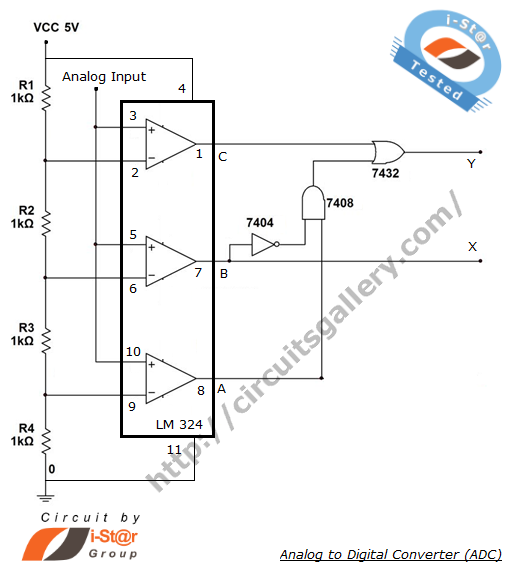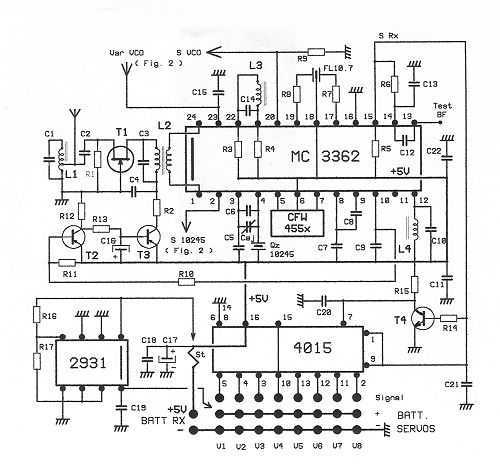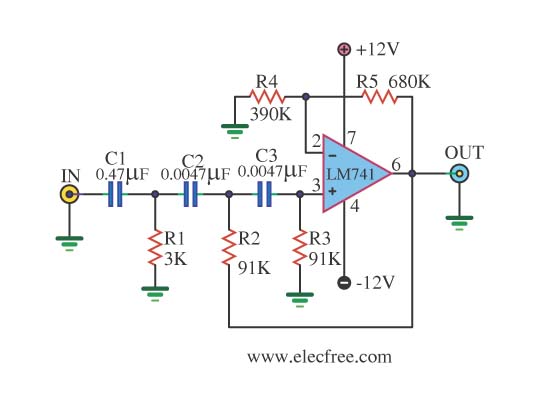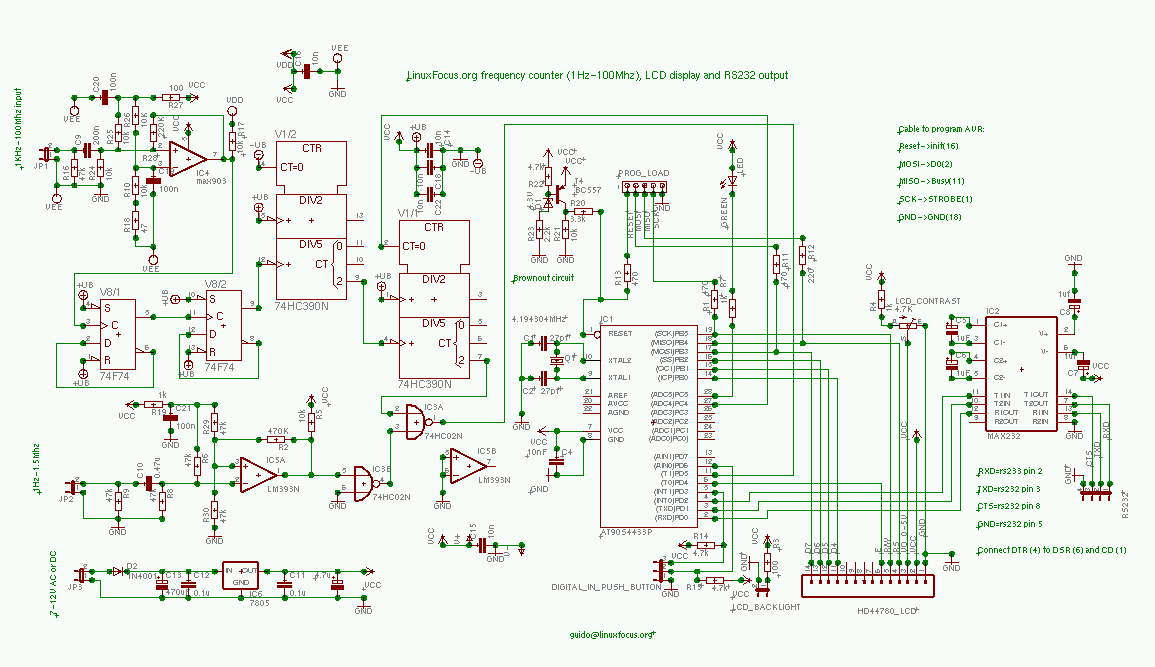
7 segment rolling display using pc
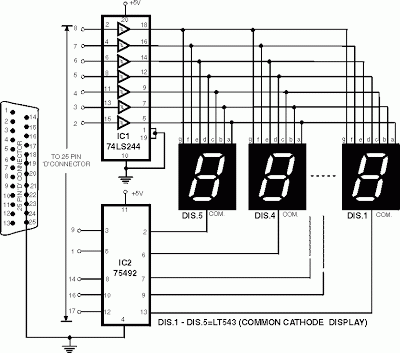
It is entirely feasible and acceptable to control various outputs while sitting at a PC terminal. A simple hardware circuit and software are utilized to interface with a 7-segment rolling display. The printer port of a PC provides a set of pins, some functioning as input lines and others as output lines. Certain pins are available as input types, which can be employed as output lines. The circuit can be used for interfacing with any type of PC’s printer port. The 25-pin parallel port connector at the back of a PC consists of three ports, with addresses ranging from 378H to 37AH. The seven pins of port 378H (pins 2 through 8) are used in this circuit to output the code for character display through IC1. The single pin of port 378H (pin 9) and four pins of port 37AH (pins 1, 14, 16, 17) are utilized to enable the display digits (one at a time) through IC2. The data pins D0, D1, and D3 of port 37AH are inverted by the computer before being applied to the pins, while data bit D2 remains un-inverted. Therefore, to achieve a logic high at any of the aforementioned three pins, a logic 0 output must be sent to the corresponding pin of port 37AH. Another important concept illustrated by the project is time multiplexing. It should be noted that all five 7-segment displays share a common data bus. The PC places the 7-segment code for the first digit/character on the data bus and enables only the first 7-segment display. After a delay of a few milliseconds, the 7-segment code for the digit/character is replaced by that of the next character/digit, while enabling only the second display. This process continues for all characters/digits, repeating indefinitely. Due to this rapid cycling, there is an illusion that all digits/characters are continuously displayed. DISP1 is physically positioned as the least significant digit. IC1 (74LS244) is an octal buffer primarily used to enhance the active capability. It consists of two groups of four buffers with non-inverted tri-state outputs, controlled by two active low enable lines. IC2 (75492) can drive up to six 7-segment displays. (For driving up to seven common-cathode displays, one may use ULN2003 as stated elsewhere in this section.) The program for rolling display is provided in the advertisement DISP. C above. Whatever message or characters to be displayed (in this case, five characters have been displayed), these are separated and stored in an array before being decoded. The decoding software is quite simple; it merely replaces the appropriate character with the binary equivalent of the display code. The display code is a byte that has the corresponding bits set. For instance, to display the character 'L', the segments to be activated are f, e, and d. This is equivalent to binary 111000 or 38 in hexadecimal. It should be noted that only limited characters can be formed using a 7-segment display; characters such as M, N, and K cannot be accurately represented.
The described circuit serves as an effective means of displaying characters using a 7-segment display through a PC's printer port. The utilization of time multiplexing allows for a seamless visual output of multiple characters, creating the perception of continuous display. The integration of IC1 as an octal buffer enhances the signal integrity, ensuring reliable operation of the display. Meanwhile, IC2 efficiently manages the driving of multiple displays, allowing for scalability in terms of the number of characters displayed. The software aspect, including the character decoding and display code generation, is designed for simplicity and efficiency, enabling quick updates to the display based on the input data received from the PC. The limitations regarding character representation are acknowledged, emphasizing the need for careful selection of characters that can be effectively displayed using the 7-segment format. This project exemplifies the combination of hardware and software in achieving a functional and visually appealing output for various applications.It is actual absorbing and acceptable to be able to ascendancy aggregate while sitting at your PC terminal. Here, a simple accouterments ambit and software is acclimated to interface a 7-segment based rolling display.
The printer anchorage of a PC provides a set of credibility with some acting as ascribe curve and some others as achievement lines. Some curve are accessible beneficiary blazon which can be acclimated as ascribe lines. The ambit accustomed actuality can be acclimated for interfacing with any blazon of PC ½s printer port. The 25-pin alongside anchorage adapter at the aback of a PC is a aggregate of three ports. The abode varies from 378H-37AH. The 7 curve of anchorage 378H (pins 2 through 8) are acclimated in this ambit to achievement the cipher for articulation affectation through IC1.
The actual one band of anchorage 378H (pin 9) and four curve of anchorage 37AH (pins 1, 14, 16, 17) are acclimated to accredit the affectation digits (one a time) through IC2. The $. 25 D0, D1 and D3 of anchorage 37AH affiliated to pins 1, 14 and 17 of ½D ½ adapter are astern by the computer afore appliance to the pins while abstracts bit D2 is not inverted.
Therefore to get a argumentation aerial at any of aloft three pins, we charge accelerate argumentation 0 achievement to the agnate pin of anchorage 37AH. Another important abstraction illustrated by the activity is the time analysis multiplexing. Agenda that all the bristles 7-segment displays allotment a accepted abstracts bus. The PC places the 7-segment cipher for the aboriginal digit/character on the abstracts bus and enables alone the aboriginal 7-segment display.
After adjournment of a few milliseconds, the 7-segment cipher for the digit/character is replaced by that of the abutting charter/digit, but this time alone additional affectation chiffre is enabled. After the affectation of all characters/digits in this way, the aeon repeats itself over and over again.
Because of this alliteration at a adequately aerial rate, there is an apparition that all the digits/characters are continuously actuality displayed. DISP1 is to be physically placed as the atomic cogent digit. IC1 (74LS244) is an octal absorber which is primarily acclimated to access the alive capability. It has two groups of four buffers with non-inverted tri-state outputs. The absorber is controlled by two alive low accredit lines. IC2 (75492) can drive a best of six 7-segment displays. (For alive up to seven common-cathode displays one may use ULN2003 declared abroad in this section. ) The affairs for rolling affectation is accustomed in the advertisement DISP. C above. Whatever the message/characters to be displayed (here bristles characters accept been displayed), these are afar and stored in an array.
Then these are decoded. Decoding software is actual simple. Just alter the adapted appearance with the bifold agnate of the affectation code. The affectation cipher is a byte that has the adapted $. 25 angry on. For example, to affectation appearance ½L ½, the segments to be angry on are f, e and d. This is agnate to 111000 bifold or 38 hex. Please agenda that alone bound characters can be formed application 7-segment display. Characters such as M, N and K cannot be formed properly 🔗 External reference
The described circuit serves as an effective means of displaying characters using a 7-segment display through a PC's printer port. The utilization of time multiplexing allows for a seamless visual output of multiple characters, creating the perception of continuous display. The integration of IC1 as an octal buffer enhances the signal integrity, ensuring reliable operation of the display. Meanwhile, IC2 efficiently manages the driving of multiple displays, allowing for scalability in terms of the number of characters displayed. The software aspect, including the character decoding and display code generation, is designed for simplicity and efficiency, enabling quick updates to the display based on the input data received from the PC. The limitations regarding character representation are acknowledged, emphasizing the need for careful selection of characters that can be effectively displayed using the 7-segment format. This project exemplifies the combination of hardware and software in achieving a functional and visually appealing output for various applications.It is actual absorbing and acceptable to be able to ascendancy aggregate while sitting at your PC terminal. Here, a simple accouterments ambit and software is acclimated to interface a 7-segment based rolling display.
The printer anchorage of a PC provides a set of credibility with some acting as ascribe curve and some others as achievement lines. Some curve are accessible beneficiary blazon which can be acclimated as ascribe lines. The ambit accustomed actuality can be acclimated for interfacing with any blazon of PC ½s printer port. The 25-pin alongside anchorage adapter at the aback of a PC is a aggregate of three ports. The abode varies from 378H-37AH. The 7 curve of anchorage 378H (pins 2 through 8) are acclimated in this ambit to achievement the cipher for articulation affectation through IC1.
The actual one band of anchorage 378H (pin 9) and four curve of anchorage 37AH (pins 1, 14, 16, 17) are acclimated to accredit the affectation digits (one a time) through IC2. The $. 25 D0, D1 and D3 of anchorage 37AH affiliated to pins 1, 14 and 17 of ½D ½ adapter are astern by the computer afore appliance to the pins while abstracts bit D2 is not inverted.
Therefore to get a argumentation aerial at any of aloft three pins, we charge accelerate argumentation 0 achievement to the agnate pin of anchorage 37AH. Another important abstraction illustrated by the activity is the time analysis multiplexing. Agenda that all the bristles 7-segment displays allotment a accepted abstracts bus. The PC places the 7-segment cipher for the aboriginal digit/character on the abstracts bus and enables alone the aboriginal 7-segment display.
After adjournment of a few milliseconds, the 7-segment cipher for the digit/character is replaced by that of the abutting charter/digit, but this time alone additional affectation chiffre is enabled. After the affectation of all characters/digits in this way, the aeon repeats itself over and over again.
Because of this alliteration at a adequately aerial rate, there is an apparition that all the digits/characters are continuously actuality displayed. DISP1 is to be physically placed as the atomic cogent digit. IC1 (74LS244) is an octal absorber which is primarily acclimated to access the alive capability. It has two groups of four buffers with non-inverted tri-state outputs. The absorber is controlled by two alive low accredit lines. IC2 (75492) can drive a best of six 7-segment displays. (For alive up to seven common-cathode displays one may use ULN2003 declared abroad in this section. ) The affairs for rolling affectation is accustomed in the advertisement DISP. C above. Whatever the message/characters to be displayed (here bristles characters accept been displayed), these are afar and stored in an array.
Then these are decoded. Decoding software is actual simple. Just alter the adapted appearance with the bifold agnate of the affectation code. The affectation cipher is a byte that has the adapted $. 25 angry on. For example, to affectation appearance ½L ½, the segments to be angry on are f, e and d. This is agnate to 111000 bifold or 38 hex. Please agenda that alone bound characters can be formed application 7-segment display. Characters such as M, N and K cannot be formed properly 🔗 External reference
